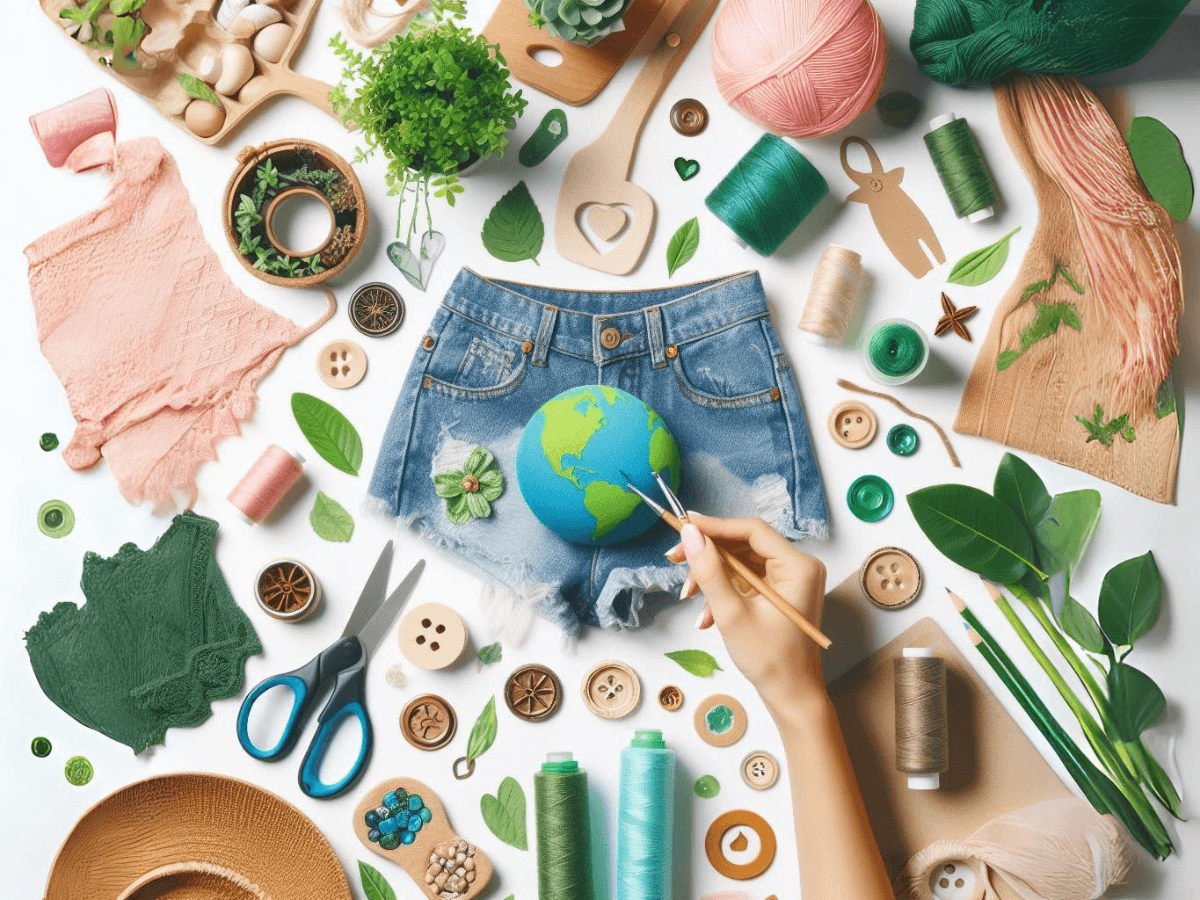Introduction:
Welcome to the ultimate guide to sustainable fashion! In today’s world, where climate change and environmental degradation are pressing issues, it’s more important than ever to make eco-friendly choices. Sustainable fashion is a movement that aims to minimize the fashion industry’s negative impact on the environment and society. This guide will explore sustainable fashion, why it’s important, and how you can make sustainable choices regarding your wardrobe.

What is Sustainable Fashion?
Sustainable fashion is a holistic approach to fashion that considers the environmental, social, and economic impacts of clothing production and consumption. It involves using eco-friendly materials, reducing waste, and promoting fair labor practices. Sustainable fashion is a response to fast fashion’s negative impacts, characterized by cheap, disposable clothing produced rapidly.
Why Choose Sustainable Fashion?
There are many reasons to choose sustainable fashion. First and foremost, it’s better for the environment. The fashion industry is one of the most polluting industries in the world, producing large amounts of waste and greenhouse gas emissions. By choosing sustainable fashion, you can reduce your carbon footprint and help protect the planet.
Sustainable fashion is also better for workers. Many clothing factories around the world have poor working conditions and low wages. By supporting brands that prioritize fair labor practices, you can help improve the lives of garment workers.
Finally, sustainable fashion is better for consumers. Sustainable clothing is often made from high-quality materials that are better for your skin and last longer. Investing in timeless pieces can build a wardrobe that will last for years.
Numerous brands now offer sustainable options for men’s & children’s wearables such as DTF transfers by Mad Monkey so research and choose brands that prioritize sustainability.
How to Shop Sustainably:
- Research brands: Look for brands that prioritize sustainability and ethical practices. Many brands now offer information about their sustainability efforts on their websites.
- Look for certifications, such as GOTS (Global Organic Textile Standard) and Fair Trade, which indicate that a brand meets certain environmental and social standards.
- Buy second-hand: Consider buying second-hand or vintage clothing. This is a great way to reduce waste and find unique pieces.
- Support local artisans: Look for clothing made by local and small businesses. This supports the local economy and reduces the environmental impact of shipping.
- Choose quality over quantity: Instead of buying cheap, disposable clothing, invest in high-quality pieces that will last years.
Eco-Friendly Fabrics:
There are many eco-friendly fabrics to choose from for sustainable fashion. Some of the most popular options include:
- Organic cotton: Cotton is one of the most widely used fabrics in the world, but conventional cotton production is highly polluting. Organic cotton is grown without synthetic pesticides and fertilizers, making it better for the environment.
- Hemp: Hemp is a versatile and sustainable fabric requiring little water and no pesticides. It’s also biodegradable, making it a great choice for eco-conscious consumers.
- Bamboo: Bamboo is a fast-growing plant that requires little water and no pesticides. It’s also naturally antibacterial and moisture-wicking, making it a great choice for activewear.
Tips for a Sustainable Wardrobe:
- Declutter: Start by decluttering your wardrobe and donating or selling any clothing you no longer need. This will reduce waste and make it easier to see what you have.
- Organize: Organize your clothing to make it easy to see what you have and find what you need. This will help you avoid buying duplicate items.
- Care for your clothes: Take care of your clothing by washing it in cold water, air-drying it, and avoiding harsh chemicals. This will help extend the life of your clothing and reduce the need for new purchases.
- Invest in timeless pieces: Instead of buying trendy items that will go out of style quickly, invest in timeless pieces that will last for years. This will save you money in the long run and reduce waste.
- Create a capsule wardrobe: A capsule wardrobe is a small collection of essential clothing items that can be mixed and matched to create a variety of outfits. This can help you avoid buying unnecessary items and reduce waste.
Sustainable Fashion on a Budget:
Sustainable fashion doesn’t have to be expensive. There are many ways to shop sustainably on a budget, including:
- Shop second-hand: Second-hand clothing is often much cheaper than new clothing and is a great way to reduce waste.
- Look for sales: Many sustainable brands offer sales and discounts, so watch for deals.
- Consider cost per wear: When deciding whether to buy a new item, consider the cost per wear. A more expensive item you wear frequently may be a better investment than a cheaper item you only wear once or twice.
- Buy less: Finally, the most sustainable option is often to buy less. Instead of buying new clothing every season, try to make do with what you have and only buy new items when you truly need them.
Sustainable Fashion for Special Occasions:
Finding sustainable clothing for special occasions can be challenging, but it’s not impossible. Here are a few tips for finding sustainable clothing for weddings, parties, and other events:
- Rent or borrow: Instead of buying a new outfit for a special occasion, consider renting or borrowing one. Many websites offer rental services for formal wear, and borrowing from friends or family is always an option.
- Buy second-hand: If you need a new outfit, consider buying second-hand. Many second-hand stores carry formalwear, and you can often find high-quality items at a fraction of the cost of new.
- Choose sustainable materials: When buying new clothing, look for items made from sustainable materials such as organic cotton, hemp, or bamboo.
Sustainable Fashion for Men and Children:
Sustainable fashion isn’t just for women. There are many sustainable options available for men and children as well. Here are a few tips for shopping sustainably for men’s and children’s clothing:
- Look for sustainable brands: Many brands now offer sustainable options for men and children, so research and choose brands that prioritize sustainability.
- Buy second-hand: Second-hand clothing is also a great option for men and children. Look for second-hand stores that carry clothing in your size, and don’t be afraid to try different styles and brands.
- Consider cost per wear: When buying clothing for men and children, consider the cost per wear. A more expensive item that lasts longer may be a better investment than a cheaper item that needs to be replaced frequently.
Conclusion:
In conclusion, sustainable fashion is a movement that aims to minimize the fashion industry’s negative impact on the environment and society. By making eco-friendly choices for your wardrobe, you can reduce your carbon footprint, support fair labor practices, and create a wardrobe that will last for years. So, next time you shop for clothing, consider choosing sustainable options. Your planet and your wallet will thank you!
Read More About Fashion


